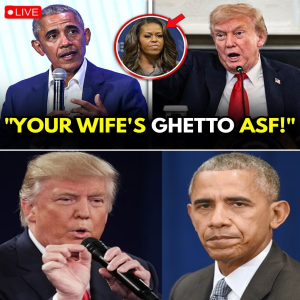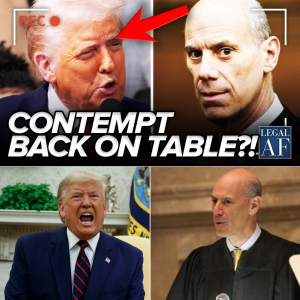It began as an ordinary Oval Office photo-op — one of those carefully choreographed moments meant to project confidence and control. Former President Donald Trump stood flanked by pharmaceutical executives and advisers, touting what he called a “historic step” to lower drug prices. Cameras rolled, flashes popped, and reporters scribbled notes. Then, in a moment that would ricochet across every major network and social media platform within hours, a man standing just feet behind Trump suddenly collapsed.

As aides and medical personnel rushed to assist, witnesses say Trump turned briefly, saw the man lying on the ground — and then turned back to the cameras, expression blank, resuming his remarks as if nothing had happened. Dr. Mehmet Oz, reportedly on hand for the event, bent to help, along with others in the room. Within seconds, staff ushered the man out, visibly dazed but conscious. The White House later confirmed the individual was stable.
But the damage had already been done — not to the man’s health, but to Trump’s image.
Within minutes, video clips of the incident exploded online, amassing millions of views and sparking a flood of outrage. “How can a president just stand there?” read one viral tweet that racked up 4.7 million impressions in an hour. Others compared the scene to Trump’s infamous moments of perceived indifference — from tossing paper towels in Puerto Rico after Hurricane Maria to reportedly ignoring early pandemic briefings. The phrase “Trump looked away” trended on X (formerly Twitter), while late-night hosts pounced.
Then came MSNBC host Lawrence O’Donnell, whose impassioned monologue turned the clip into a political earthquake. “That moment,” he declared, “should be the official portrait of Trump’s second term — a man staring straight ahead while someone behind him collapses.” O’Donnell’s words struck a nerve, echoing across cable news and social feeds. “It’s not just optics,” he continued. “It’s a window into his soul — or the absence of one.”
Political analysts and insiders say the outrage reflects a deeper exhaustion with Trump’s pattern of detachment — a presidency defined by chaos, controversy, and emotional disconnect. “He’s never been a man of empathy,” said one former White House aide, speaking anonymously. “The reaction — or lack of one — was pure Trump. Always forward, never human.”

Even conservative commentators struggled to defend the moment. Fox News briefly aired the footage before shifting focus, while right-leaning pundits framed it as “a misunderstanding.” But across the political spectrum, the image resonated as something larger: a visual metaphor for a leader’s moral vacancy.
Behind the scenes, White House staff reportedly scrambled to contain the fallout. According to two insiders familiar with the event, aides urged Trump to issue a short statement expressing concern for the man’s well-being. “He refused,” one of them claimed. “He said it would make him look weak.” That decision — if true — only fueled the firestorm.
By the next morning, hashtags like #OvalOfficeOutrage, #TrumpTurnsAway, and #MoralVacuum dominated trending charts. Cable news ran slow-motion replays, commentators dissected body language, and psychologists weighed in on empathy in leadership. “It’s not about the fainting man,” wrote columnist Dana Wilson in The Atlantic. “It’s about what Trump’s gaze — or his refusal to look — says about us as a nation.”
The controversy has also revived conversations about Trump’s second-term ambitions. With campaign rallies reigniting and his legal challenges mounting, critics argue the viral moment undercuts his claims of renewed discipline and focus. “He’s still the same man,” said O’Donnell during a follow-up segment. “Different year, same indifference.”
For Trump’s supporters, however, the backlash is just more media “hysteria.” The former president’s spokesperson dismissed the coverage as “manufactured outrage from partisan pundits who see drama in everything.” Yet even some within his base admit the optics were “uncomfortable.”

Public reaction has been blistering — and relentless. Online, memes comparing Trump’s blank stare to statues of ancient emperors flooded Reddit and Instagram. One TikTok remix, set to dramatic violin music and titled ‘The Portrait of a Presidency,’ surpassed 20 million views within a day. Late-night hosts dubbed the scene “The Oval Office Freeze.”
“This is what indifference looks like,” said an MSNBC producer in a behind-the-scenes clip shared to YouTube. “You can’t script that kind of symbolism — it just happens. And once it’s captured, you can’t unsee it.”
Whether the incident will carry political consequences remains unclear. But symbolically, it has already cemented its place in the visual archive of Trump’s public life — an unsettling tableau of power and absence, empathy and ego.
As the footage continues to trend across platforms, the debate rages on. Was it mere misinterpretation, or a genuine reflection of character? For many Americans, the answer doesn’t matter. The image speaks louder than any statement: a man in need, and a leader who looks away.
And as one user posted under the viral clip — a comment shared more than 200,000 times — “You don’t need words to see the truth. Just look at who’s looking away.”





